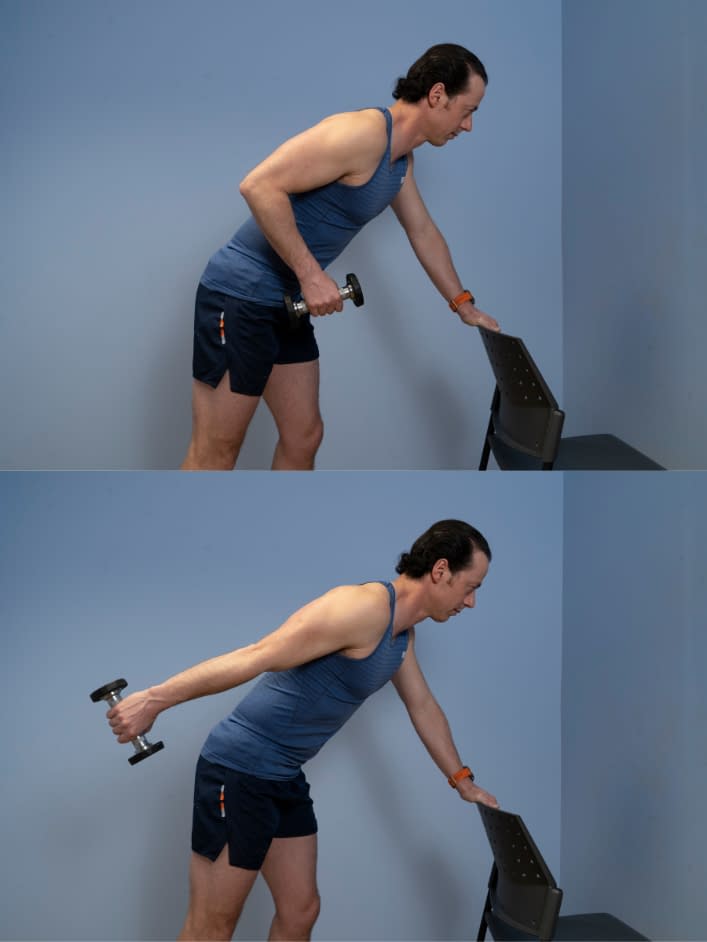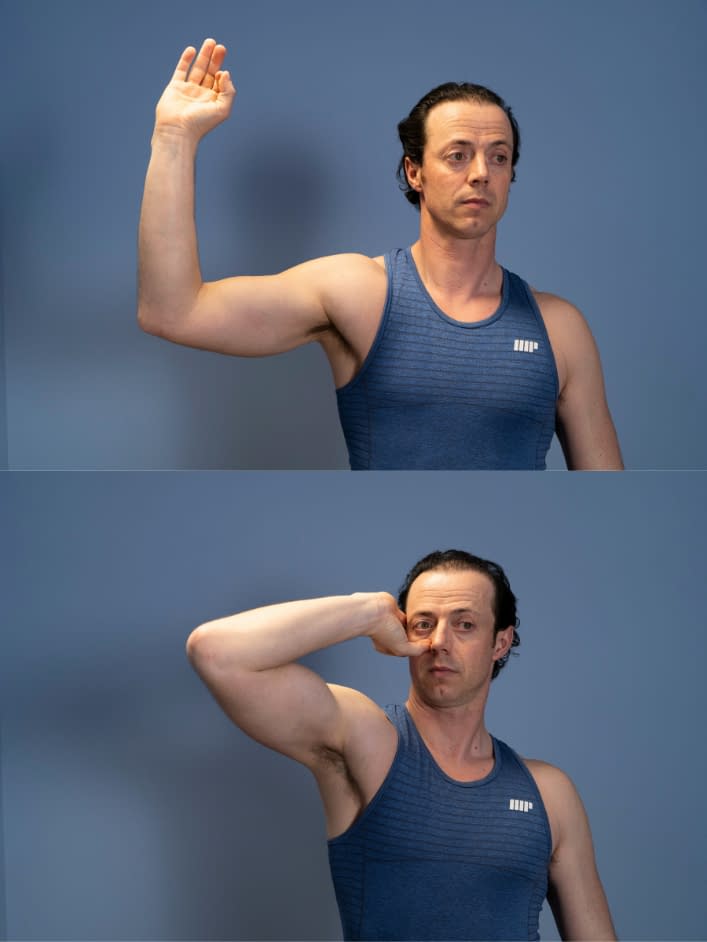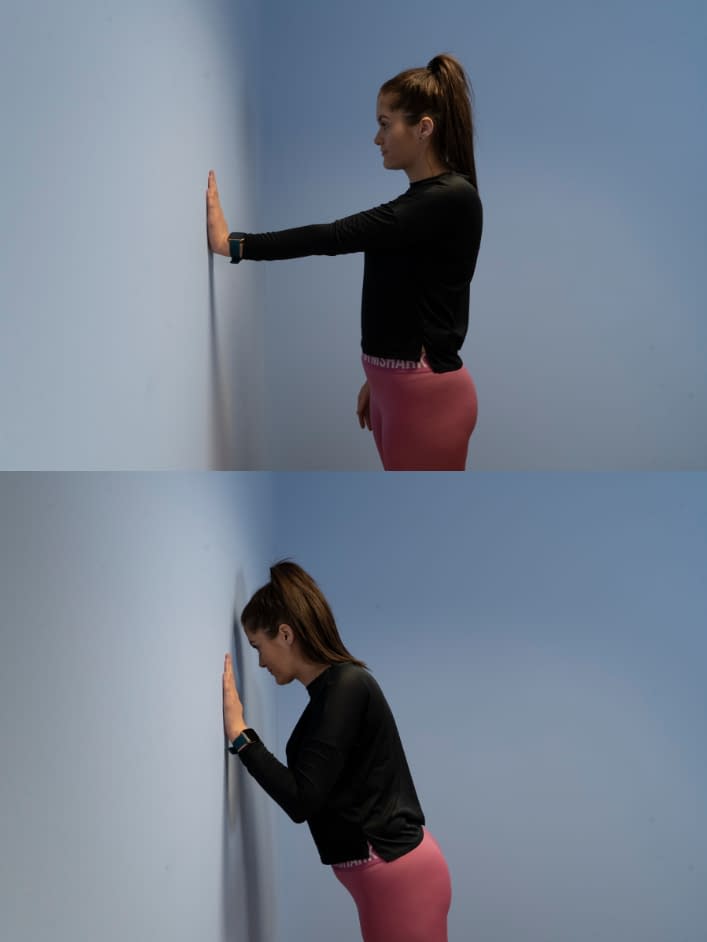Cubital Tunnel Syndrome Advanced Exercise Programme
Aim to perform this programme a minimum of once per day unless prescribed otherwise. As with any new exercise, start slowly (repetitions as able) and build up as you are able within the guidelines below.
Pain should not exceed 4/10 whilst completing this exercise programme.
1. Triceps extension
- Stand bent over with your non-injured arm used to support you using a hip high surface.
- Hold a small weight in your opposite hand (household object if you do not have a weight).
- Start with your elbow bent.
- Straighten your arm out behind you.
- Control your arm back to bent elbow position.
2. Ulnar nerve glide
- Make a zero shape with your finger and thumb, hold your arm out to the side, wrist and elbow level with shoulder or as close as possible.
- Bent the elbow to 90 degrees, turn the wrist to face the head and turn your head to look at your wrist. Hold for 2-5 seconds.
- Now turn your head and wrist to face away from each other and them back to facing each other.
3. Standing single arm wall press up
- Stand approximately one small step away from the wall.
- Place one hand chest high on the wall so that your elbow is slightly bent.
- Bend your elbow to take your head and shoulders closer to the wall.
- Push against the wall to return to starting position.
We recommend consulting a musculoskeletal physiotherapist to ensure exercises are best suited to your recovery. If you are carrying out an exercise regime without consulting a healthcare professional, you do so at your own risk. If you have any concerns whilst completing these exercises, please contact a healthcare professional.
More Plans
These initial exercises may help maintain pain-free range of movement of the elbow, prevent tightening of the soft tissues and gently mobilise the ulna nerve. They can be performed little and often throughout the day, working within the limits of your pain.
- 0
- 1
- 2
- 3
- 4
- 5
- 6
- 7
- 8
- 910


